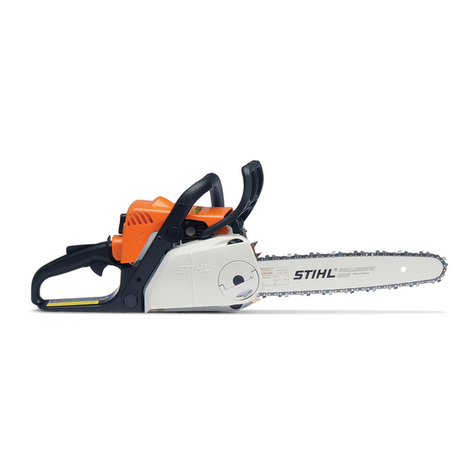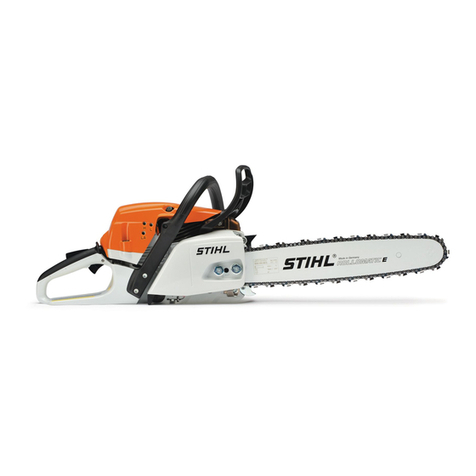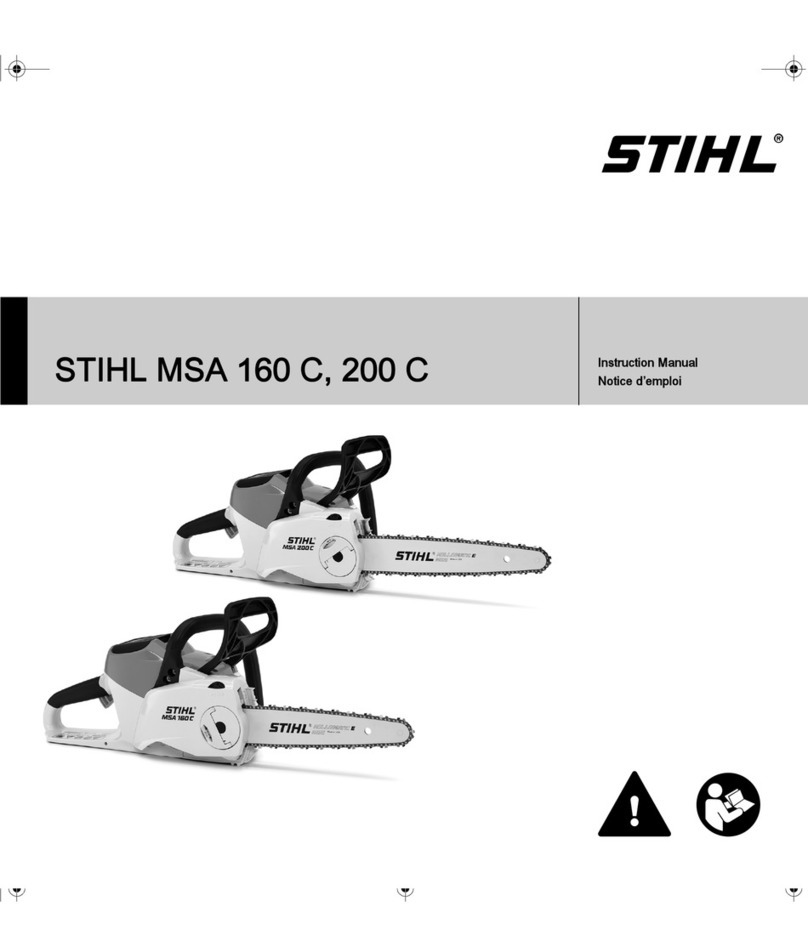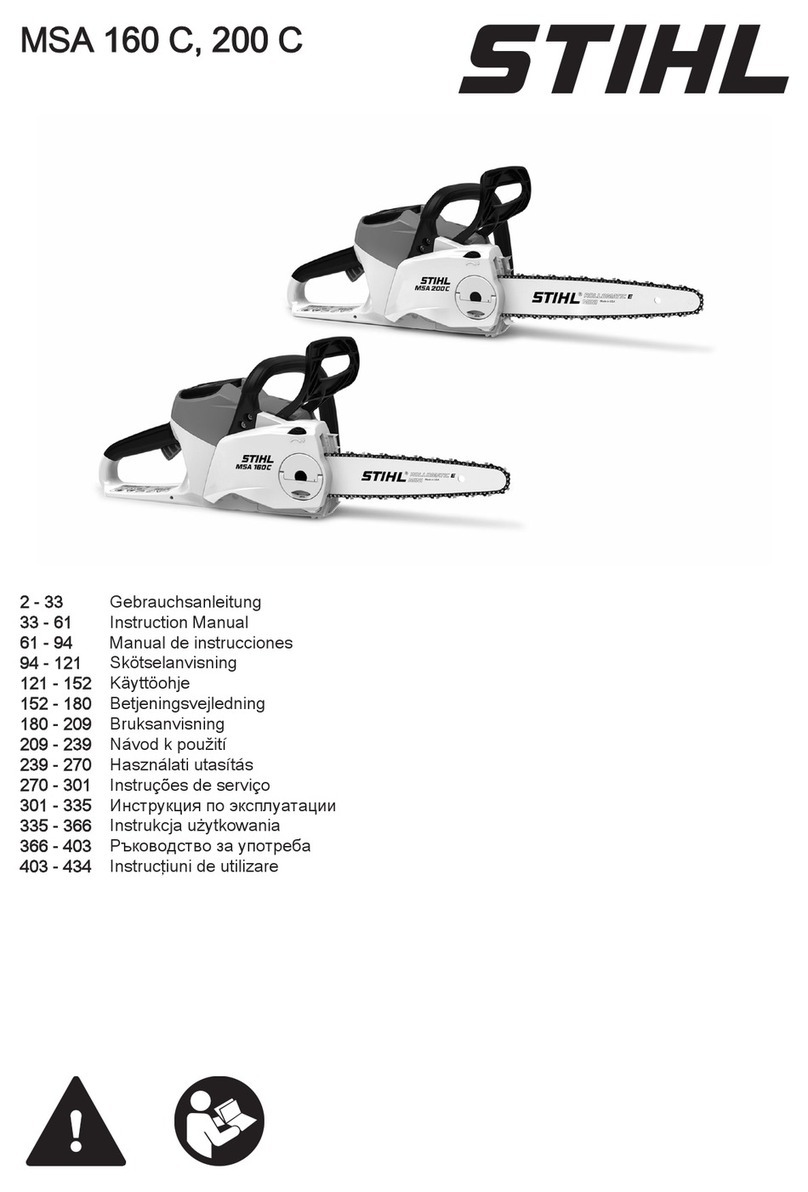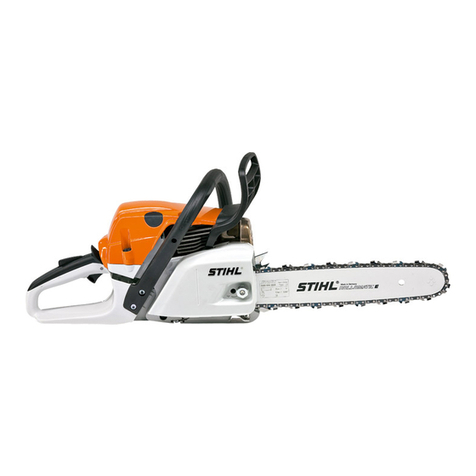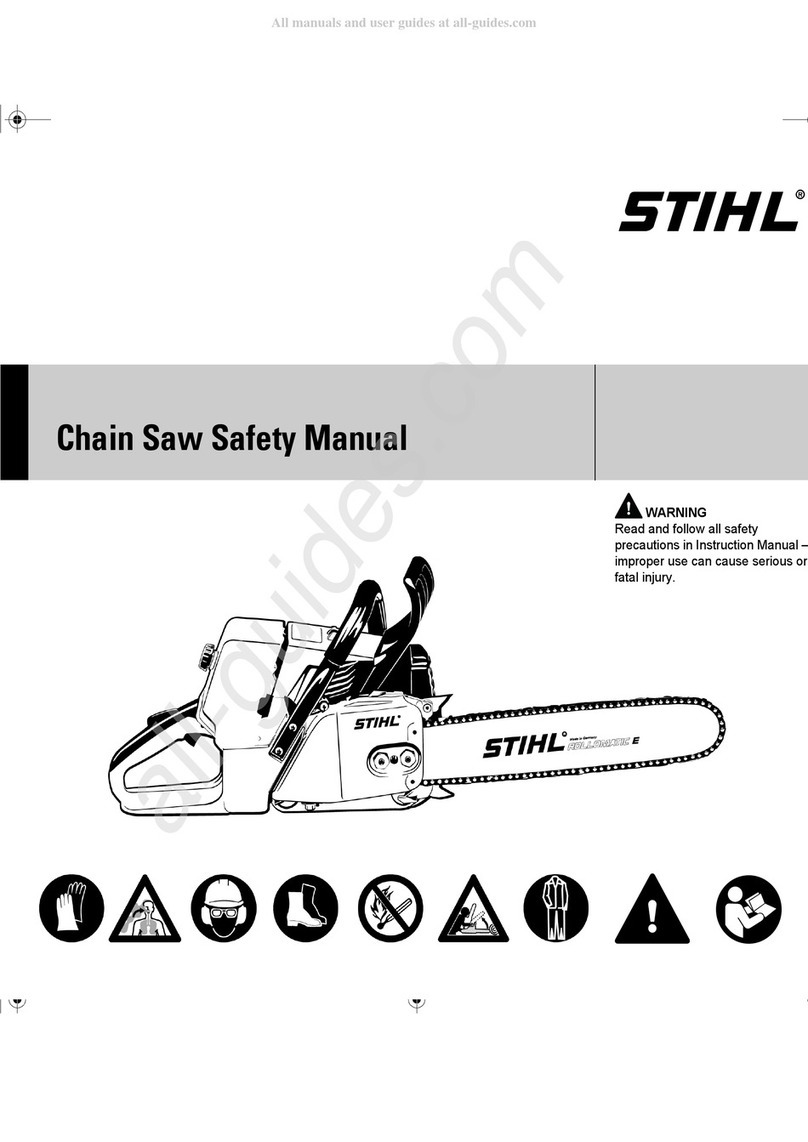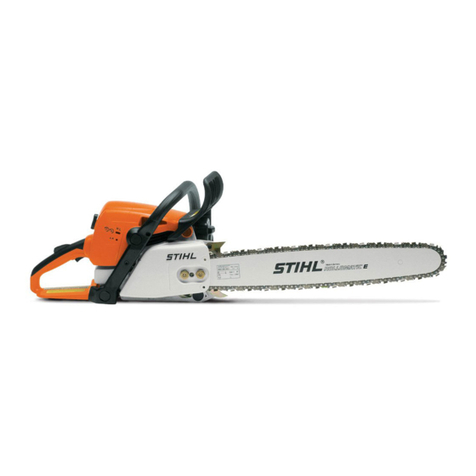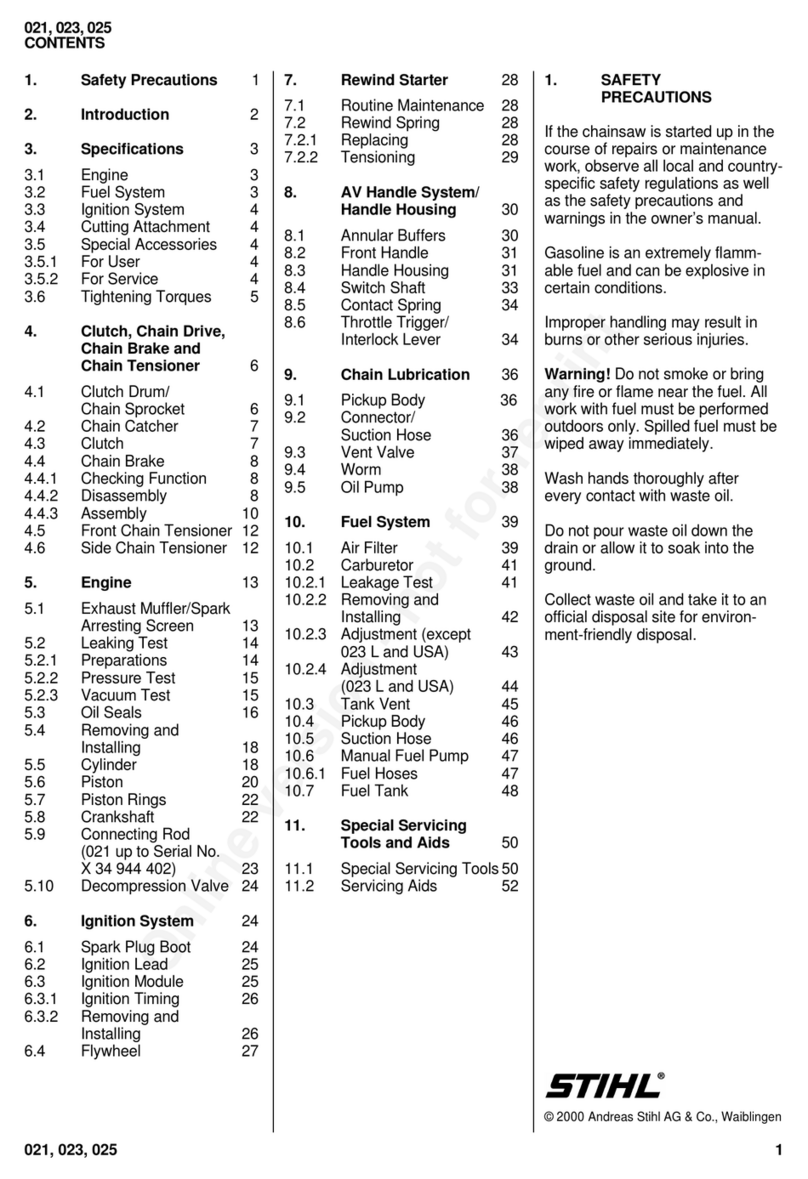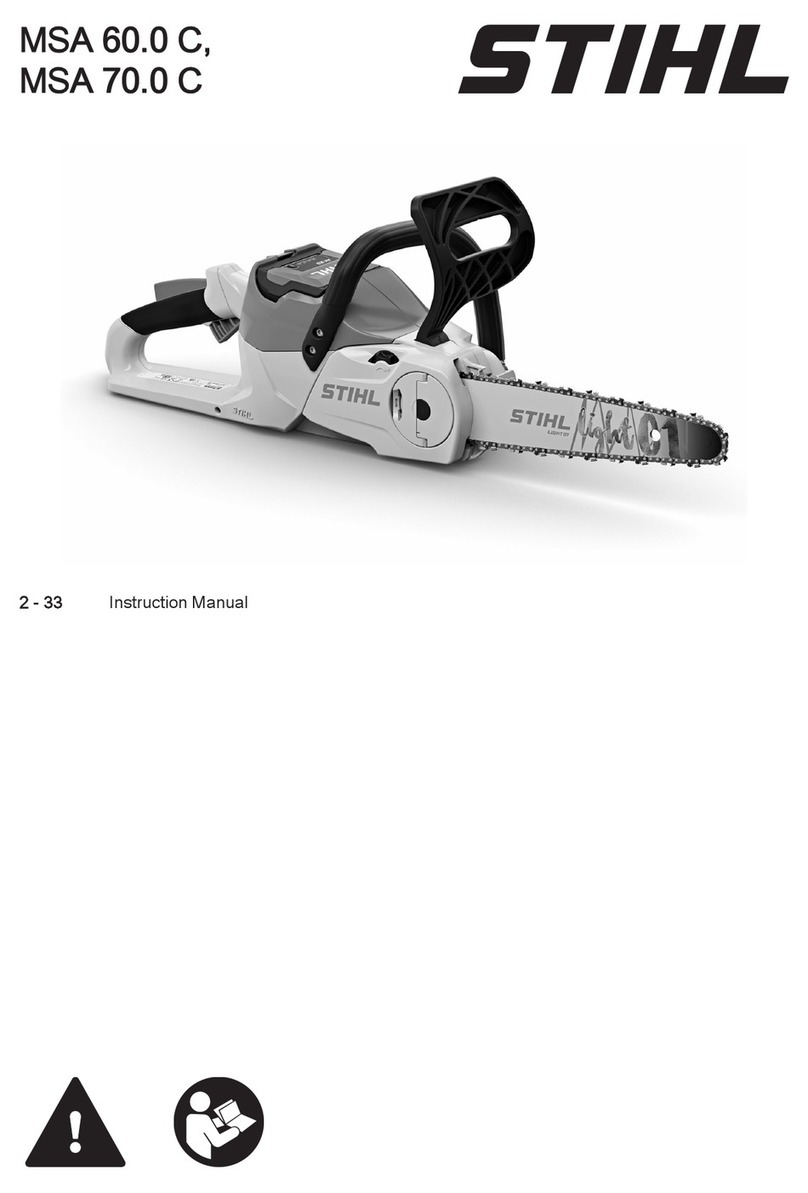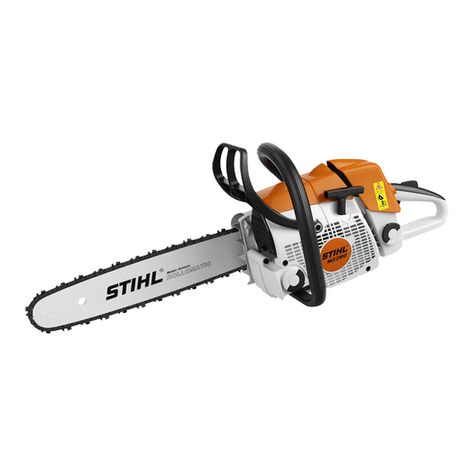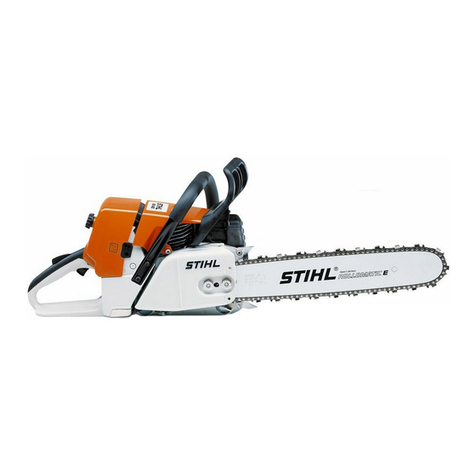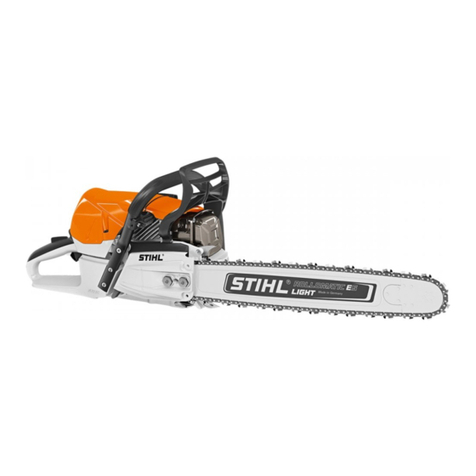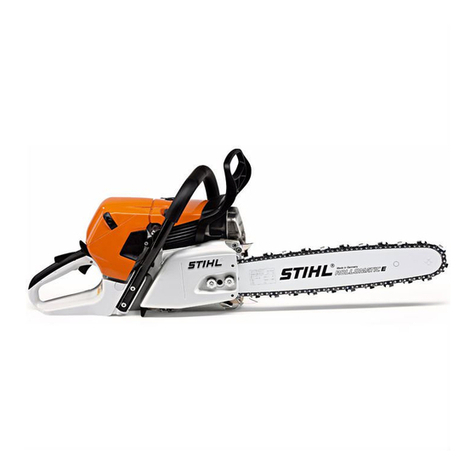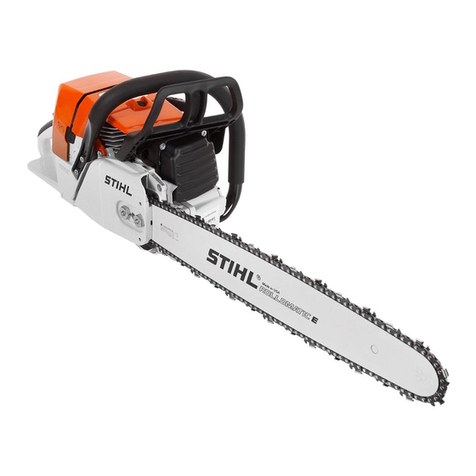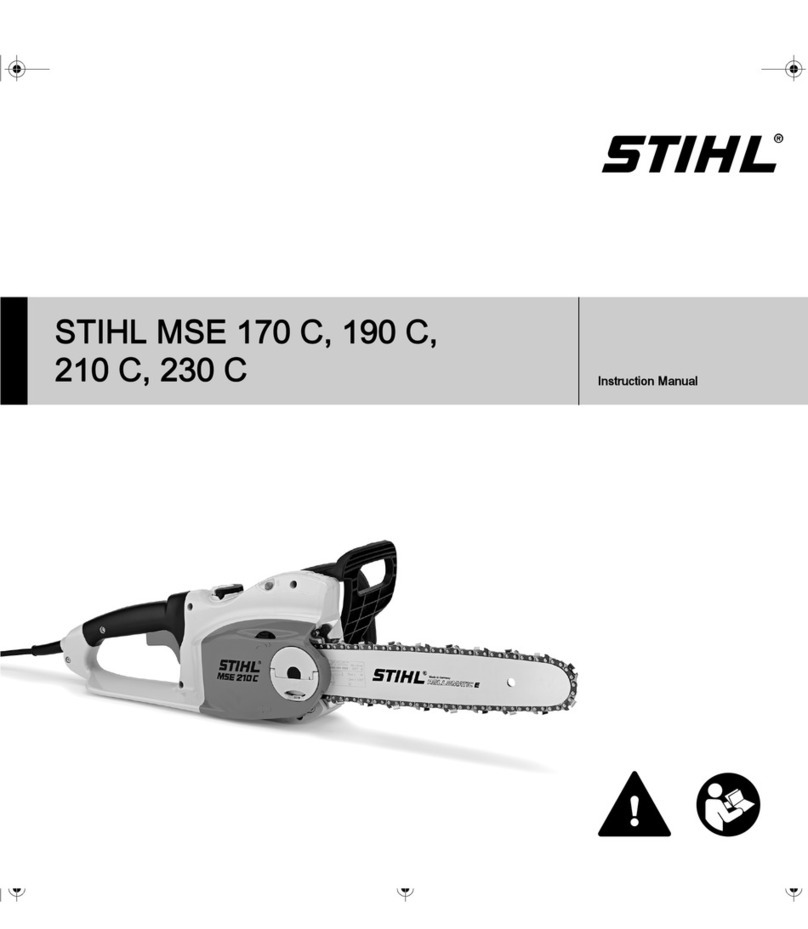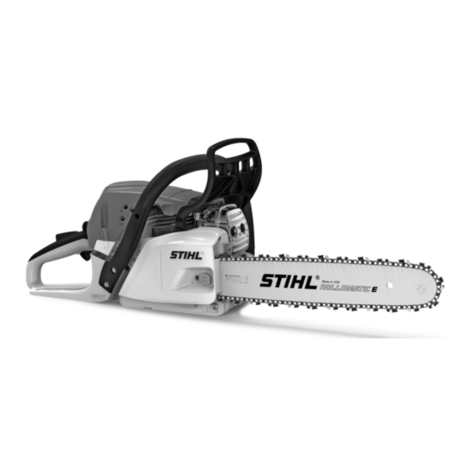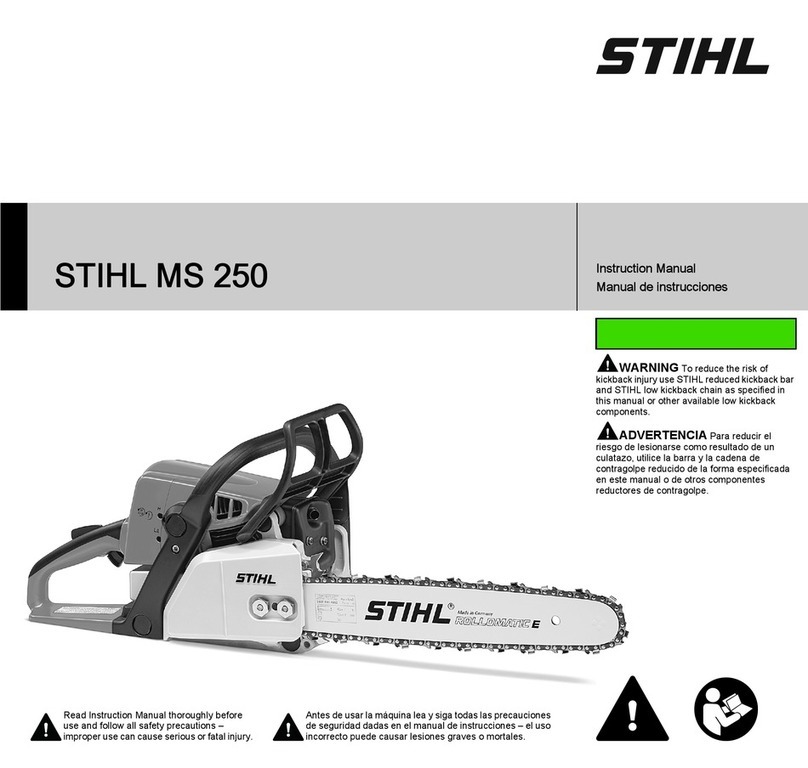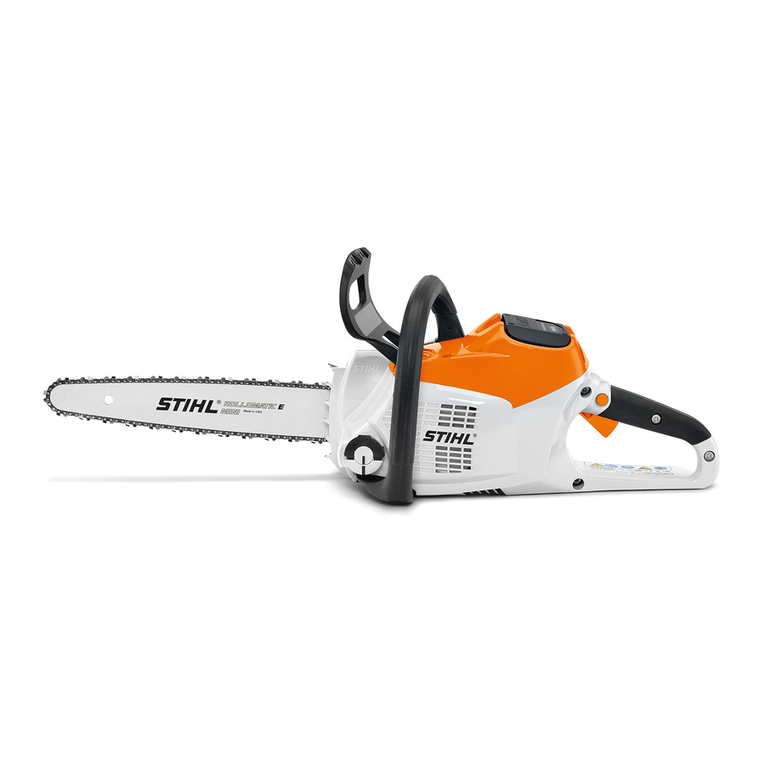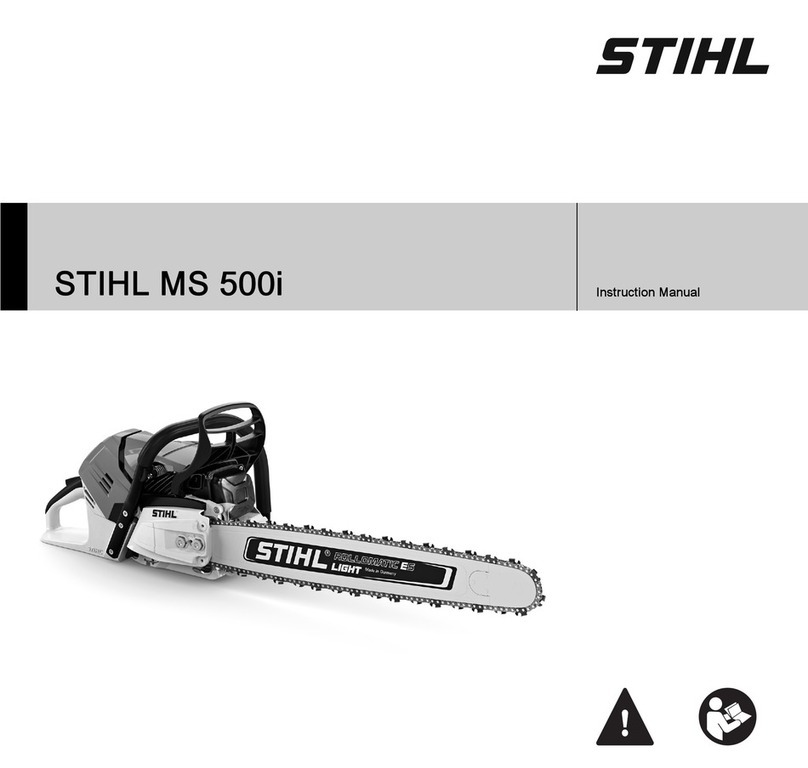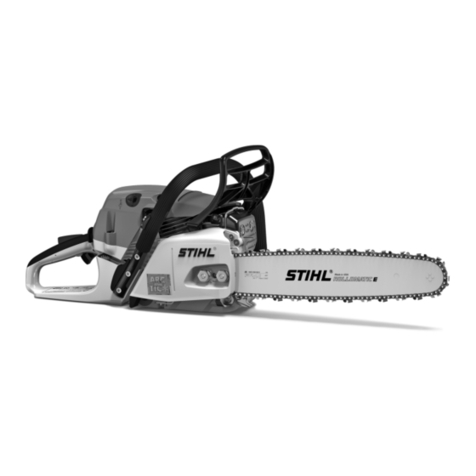
Online version - not for reprint
3MS 270, MS 280
1 Introduction
This service manual contains
detailed descriptions of all the
typical repair and servicing
procedures for this power tool.
You should make use of the
illustrated parts lists while carrying
out repair work. They show the
installed positions of the individual
components and assemblies.
Refer to the latest edition of the
relevant parts list to check the part
numbers of any replacement parts.
A fault on the machine may have
several causes. To help locate the
fault, consult the troubleshooting
charts for all assemblies and
systems in this manual and the
"STIHL Service Training System".
Refer to the "Technical Information"
bulletins for engineering changes
which have been introduced since
publication of this service manual.
Technical information bulletins also
supplement the parts list until an
updated edition is issued.
The special tools mentioned in the
descriptions are listed in chapter
"Special Servicing Tools" of this
manual. Use the part numbers to
identify the tools in the "STIHL
Special Tools" manual.
The manual lists all special
servicing tools currently available
from STIHL.
Symbols are included in the text and
pictures for greater clarity.
The meanings are as follows:
In the descriptions:
= Action to be taken as
shown in the illustration
(above the text)
– = Action to be taken that is
not shown in the illustration
(above the text)
In the illustrations:
Pointer
Direction of movement
Service manuals and all technical
Information bulletins are intended
exclusively for the use of STIHL
servicing dealers. They must not be
passed to third parties.
Servicing and repairs are made
considerably easier if the clamp (1)
5910 890 2000 is used to mount the
machine on assembly stand (2)
5910 890 3100 so that one clamp
screw engages the outer 10 mm
bore (3) in the assembly stand.
The chainsaw can then be swivelled
to the best position for the ongoing
repair.
To service the underside of the
machine, turn it upside down and
mount it in the assembly stand.
Pull the hand guard back against
the front handle for this purpose.
Always use original STIHL
replacement parts.
They can be identified by the
STIHL part number,
the STIH)
STIH)STIH)
STIH) logo
and the STIHL parts symbol (
This symbol may appear alone on
small parts.
